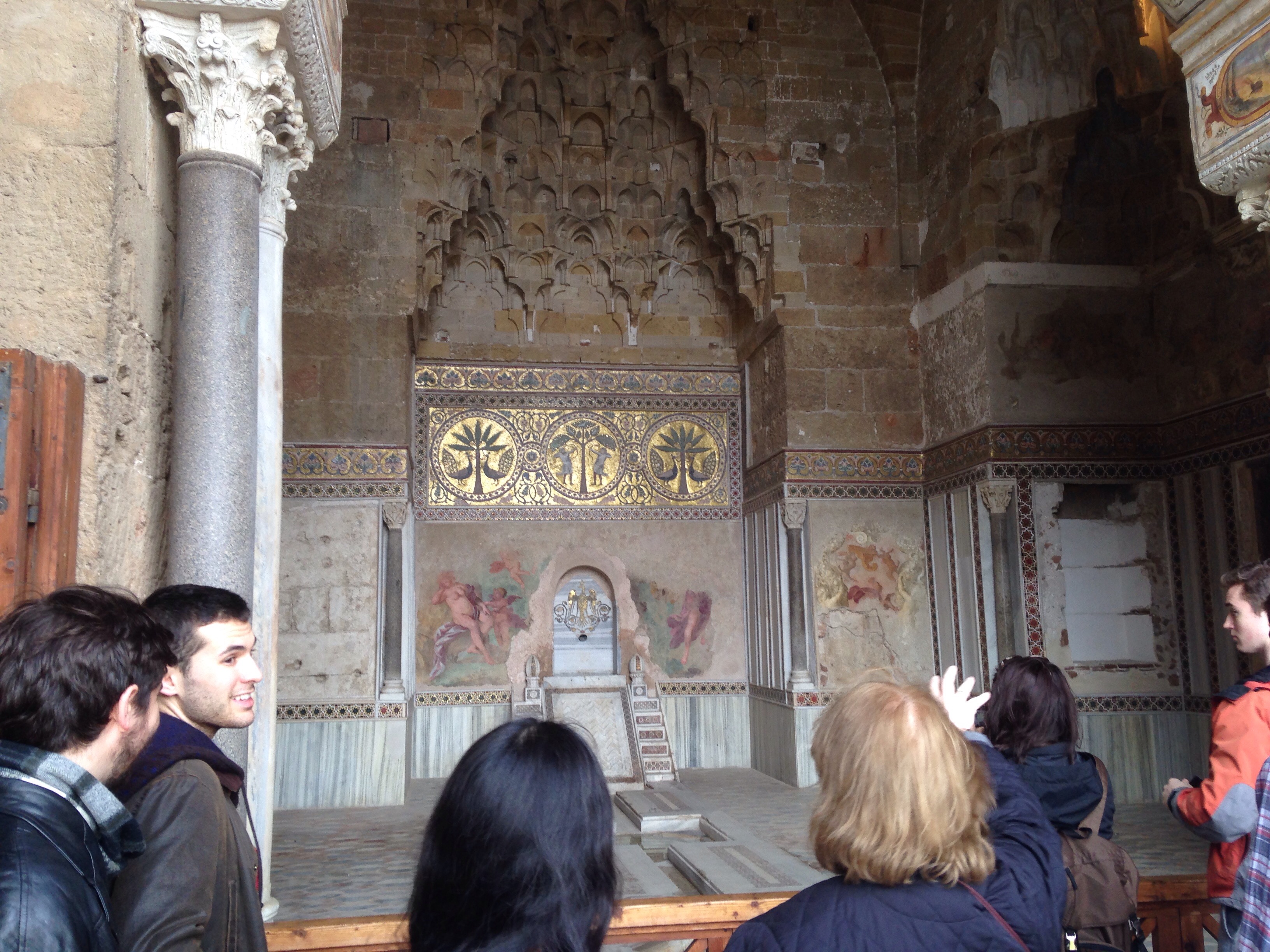
The cloister is part of the Cathedral of Monreale. The cathedral, started in 1174 by William II, is an excellent example of Norman architecture. The cloister itself is meant to offer the monks a space within the cathedral where they could enjoy the pleasures of the Sicilian sunshine without having to leave the complex. It spans 2200 meters squared and features 216 columns, each with a unique carved capital. The marble fountain at one corner is considered the work of Muslim sculptors, highlighting the varied religious history of northwest Sicily.
Zisa, Palermo 3.14.16

The Zisa castle is a beautiful example of Arab-Norman architecture in Palermo. Construction began in the 12th century by William I and was completed under his son William II. Arab craftsmen worked on the castle and the influence of Moorish architecture is evident, from the Arabic inscriptions and Islamic arches throughout the structure to the name itself – La Zisa is derived from the Arabic word al-Aziz, meaning “splendid.” Norman kings used the castle as a summer residence as, at the time, it lay just outside of the city limits of Palermo. Pictured here Professor Boyd describes the outdoor fountain, which flows down into the gardens of the castle.